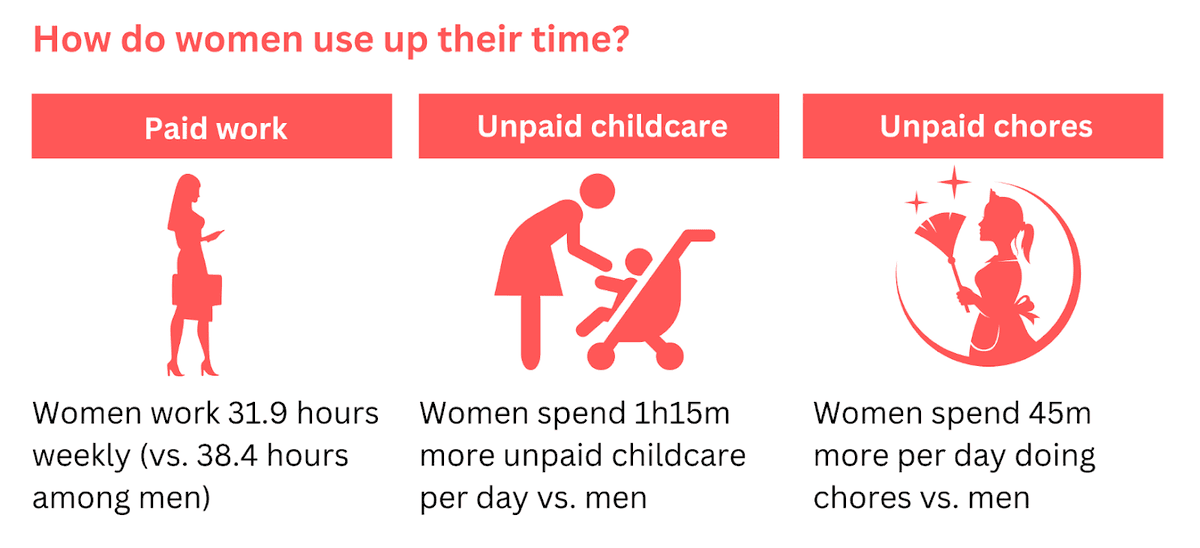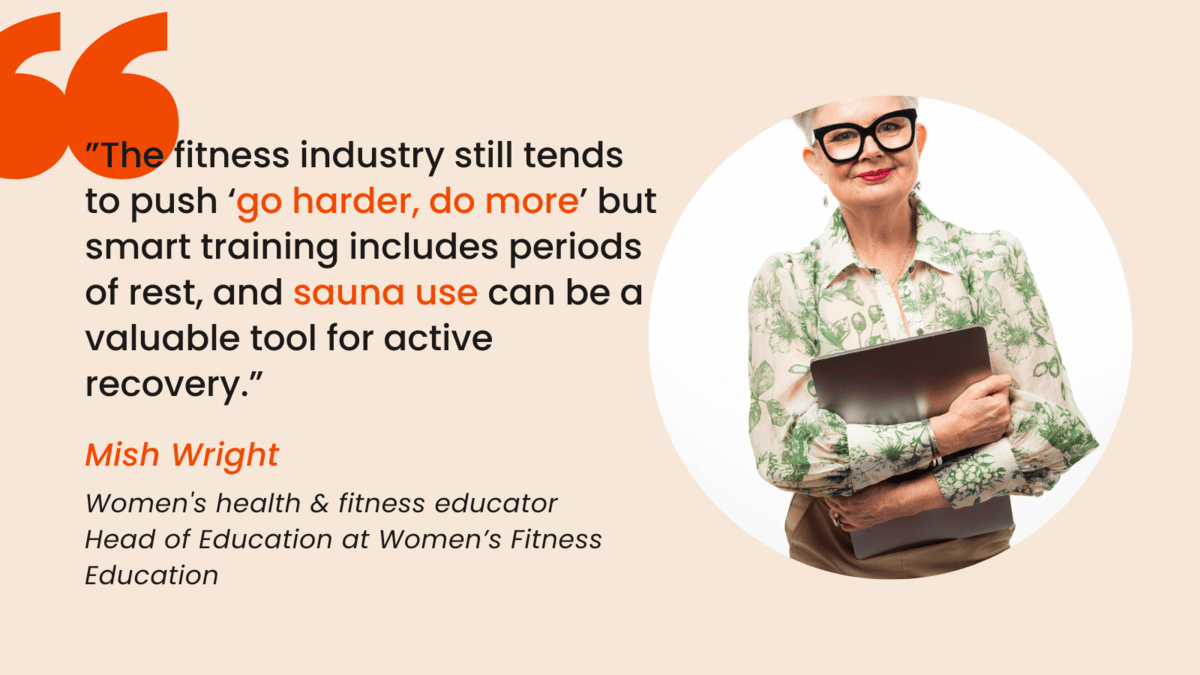SDS Australia celebrates empowering women to train smarter, recover better, and build lasting strength
Saunas are becoming an essential feature for wellbeing and post workout recovery, both at home and in gyms. And for good reason, the benefits of using a sauna after a workout are powerful, from enhancing cardiovascular function to supporting muscle recovery.
For women, fitness is often framed around becoming physically attractive, but what if we shifted the conversation to improving strength, enhancing endurance, and promoting long term health?
The sauna benefits after a workout go beyond relaxation. They play a role in reducing muscle soreness, boosting circulation, and supporting stress management.
But while saunas can support women in their fitness journey, other important underlying challenges are preventing women from training to build up their strength and endurance. We discuss the challenges women face in focusing on their fitness and how women should be training smarter, through using a sauna to support their unique requirements for recovery and stress relief.
Women’s Fitness: The Real Challenge Isn’t Just Exercise
Women are continually challenged to be fit and to stay fit. But the reasons for falling behind go beyond lacking movement or not trying hard enough. Many women juggle multiple responsibilities, from careers to caregiving, often leaving little time for structured workouts.
That’s because, apart from doing paid work, women also put in more hours completing household chores and caring for children and other family members.

Even when they do make time for fitness, the industry itself isn’t always designed with women’s unique needs in mind.
For Mish Wright, a women’s health advocate and the Head of Education at Women’s Fitness Education, the biggest challenge women face when it comes to fitness stems from the very lack of research into fitness practices that are in tune with a woman’s body. “The fitness industry was built around research on young, fit men, so much of what’s recommended doesn’t account for women’s hormonal fluctuations, reproductive health, or the realities of aging.”
On top of this, fitness spaces remain male-dominated, and few trainers are equipped with the knowledge to tailor programs for the female body. This lack of proper education leads many women to feel out of place in fitness spaces or unsure about the best ways to train for long-term strength and well-being.
“Societal expectations still push the idea that women should be smaller rather than stronger, making many hesitant to lift heavy or prioritise their own physical power”
So how do women navigate these challenges and train in a way that works for their bodies?
A well-rounded fitness routine doesn’t need to be time-consuming and it isn’t just about working harder, it’s about training smarter. That means balancing strength and endurance training with proper recovery strategies. And this is where saunas can play a pivotal role.
The Role of Sauna Recovery in Women’s Fitness
For reasons unique to women, such as storing fats and metabolising food differently compared to a man’s body, women should be following a fitness routine designed for a woman’s body and tailored to a woman’s unique needs.
Simultaneously, emphasis should be placed on “how recovery is just as important as training” Sauna use can be a powerful recovery tool that enhances overall health and athletic performance. Mish mentions that recovery needs to be reframed to be an essential part of a fitness routine or as part of gym visits. “The more we reframe recovery as essential rather than optional, the more women will feel empowered to train in ways that truly support their health.”

How Sauna Use Supports Women’s Fitness Recovery
- Boosts Circulation & Recovery – Heat exposure increases blood flow, helping muscles recover faster and reducing soreness.
- Supports Cardiovascular Health – Studies show sauna use can improve heart health and support blood pressure regulation.
- Promotes Hormonal Balance – Regular sauna use can help manage cortisol (stress hormone) levels and support metabolic health.
Not only do saunas support muscle recovery but also promote stress relief especially for those women or mums who struggle to switch their brain off when trying to relax or rest.
Mish explains that sauna benefits after a workout go far beyond enhancing weight loss. It also promotes stress management and relaxation, “By activating the parasympathetic nervous system, the ‘rest and digest’ mode that many of us struggle to tap into. ”
Sauna Considerations for Women at Different Life Stages
While sauna after workout can be a powerful recovery tool, women at different life stages may experience it differently.
- Pregnancy & Postpartum – Heat exposure can be risky during early pregnancy, and postpartum women (especially those recovering from a C-section) should be mindful of overheating.
- Perimenopause & Menopause – Some women report hot flushes worsening with sauna use. Listening to your body and staying hydrated is essential.
- Chronic Conditions – Women with heart disease or other medical conditions should check with their doctors before using a sauna regularly.
“The key is to listen to your body. If you feel dizzy, lightheaded, or excessively fatigued post-sauna, it’s a sign to ease off. Hydration is also critical, particularly for active women or those in perimenopause, as hormonal changes can already make fluid balance trickier.”
A Holistic Approach to Women’s Fitness & Well-Being
Women’s fitness isn’t just about how hard you train, it’s about how well you recover, how you manage stress, and how you care for your body over time.
Sauna benefits for recovery extend beyond relaxation. Spending time in the sauna actively supports circulation, muscle repair, and overall resilience. Instead of viewing saunas as a luxury, integrating it into a well rounded fitness plan can support women in their fitness journey, including preventing obesity and diabetes. Find out more about how many calories does a sauna burn.
Promoting women’s health is empowering them to do more, be more, and chase after their dreams.
Learn more about our custom built saunas and how our saunas can support your health and wellness aspirations. Or, gift one to show your appreciation to the most important woman in your life.
References:
SDS Australia interview with Mish Wright, Director of Education at Women’s Fitness Education
Sources:
Podstawskin R., Borystawski K, et.al. Correlations between Repeated Use of Dry Sauna for 4 x 10 Minutes, Physiological Parameters, Anthropometric Features, and Body Composition in Young Sedentary and Overweight Men: Health Implications. Biomed Res Int. 2019 Jan 21;2019:7535140. doi: 10.1155/2019/7535140
Lee E, Kolunsarka I, et.al. Effects of regular sauna bathing in conjunction with exercise on cardiovascular function: a multi-arm, randomized controlled trial. Am J Physiol Regul Integr Comp Physiol. 2022 Jul 4;323(3):R289–R299. doi: 10.1152/ajpregu.00076.2022
AIHW. Overweight and obesity. 17 Jun 2024
Laurie J, and McIntyre HD. A Review of the Current Status of Gestational Diabetes Mellitus in Australia—The Clinical Impact of Changing Population Demographics and Diagnostic Criteria on Prevalence. Int J Environ Res Public Health. 2020 Dec 15;17(24):9387. doi: 10.3390/ijerph17249387
Laukkanen, J. A., & Kunutsor, S. K. Is sauna bathing protective of sudden cardiac death? Prog Cardiovasc Dis. 2019 May-Jun;62(3):288-293. doi: 10.1016/j.pcad.2019.05.001
Hussain, J., & Cohen, M. Clinical Effects of Regular Dry Sauna Bathing: A Systematic Review. Evid Based Complement Alternat Med. 2018 Apr 24;2018:1857413. doi: 10.1155/2018/1857413








